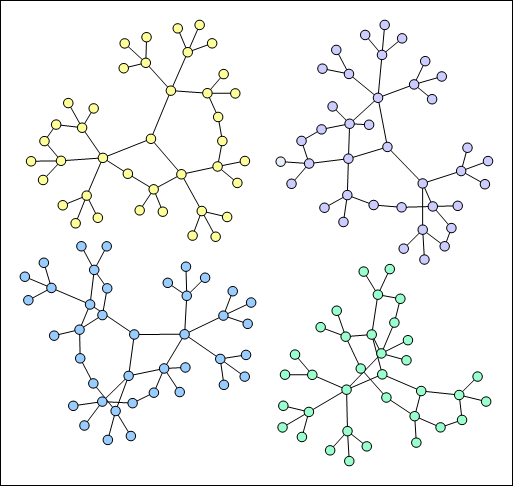Graph parts layouts deal with the automatic arrangement of the connected components of graphs. Two vertices are in the same connected component (also called region), if and only if there exists a path between them.
Graph parts layouts serve as foundation for tree and graph layouts (e.g. layouts in which the graph parts are either tree vertices and edges or graph vertices and edges).
Regardless of whether it is a tree or graph layout, each graph part layout performs the following steps:
All types of graph parts layout derive from the base NGraphPartsLayout class. The layout of the regions is controlled by the cells layout, accessible from the RegionLayout property. By default this property holds an instance of the NFlowLayout class.
The following image illustrates the result of a symmetrical layout over the four connected components of a graph, which were finally arranged with a flow layout:

Because of the final region arrangement step, all positions assigned by the primary layout algorithm of graph parts layouts are relative to the currently arranged region.